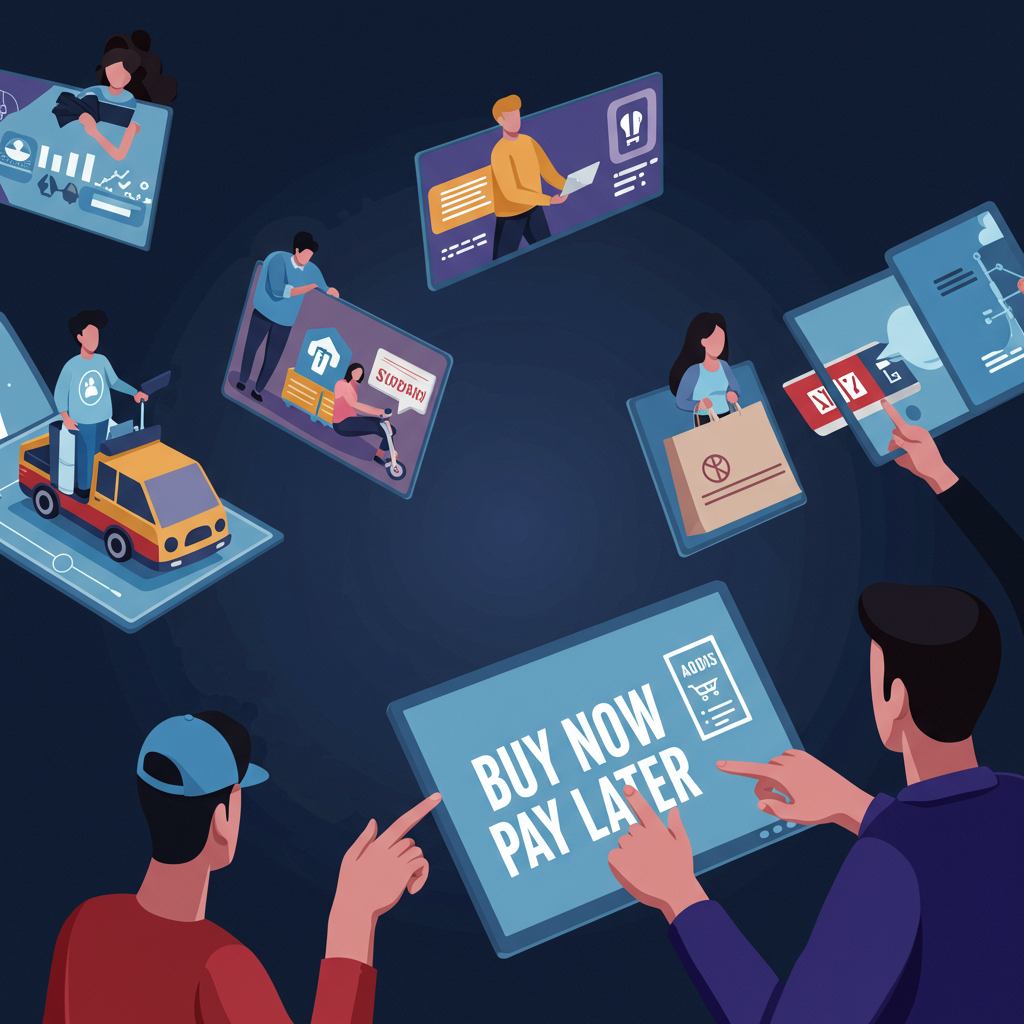Today’s digital landscape offers unparalleled convenience at the tap of a screen. From ride-sharing and meal delivery to instant streaming and easy vacation rentals, technology has fundamentally reshaped our daily habits and expectations. But this convenience came at a cost – often not initially to the consumer. For years, deeply funded tech companies, backed by venture capital, operated services like Uber and Airbnb below their true cost, essentially offering a temporary “lifestyle subsidy” to users, particularly millennials, who eagerly adopted these affordable, convenient alternatives to traditional services like taxis and hotels.
Now, as those temporary subsidies fade and the cost of these ingrained conveniences rises, a new financial tool is stepping into the spotlight: Buy Now, Pay Later (BNPL). Services like Klarna, Affirm, and AfterPay are surging in popularity, allowing consumers to split purchases into manageable installments. But is BNPL merely a convenient payment method, or is it becoming the next form of lifestyle subsidy, helping users afford the very services whose costs have begun to catch up?
What Makes Buy Now, Pay Later So Popular?
The appeal of BNPL is clear. Imagine needing a major item, like a new couch, but balking at a large, immediate charge. BNPL allows you to get the item now while breaking down the payment over several weeks or months, often interest-free if paid on time.
Data from the Consumer Financial Protection Bureau (CFPB) indicates that over one in five people have used BNPL, and its user base often skews towards younger individuals and those with limited or poor credit history. The primary draw is the lower barrier to entry compared to traditional credit cards or bank loans. Applying is often quick and integrated directly into online checkout pages.
However, the use cases are expanding beyond significant discretionary purchases. Concerns are growing as BNPL is increasingly used for everyday necessities. A LendingTree survey found that 25% of BNPL users utilize the service for things like groceries. The partnership between Klarna and DoorDash, allowing customers to “eat now, pay later,” particularly highlights this shift, raising questions about the risks of financing immediate consumption, like a delivered burrito.
BNPL and the “Millennial Lifestyle Subsidy”
This rise of BNPL, especially for convenience services, is closely linked to the idea of the “millennial lifestyle subsidy.” According to author Malcolm Harris, companies like Uber and Airbnb fundamentally changed consumer habits through regulatory arbitrage and massive investor funding. By operating outside traditional regulations (e.g., Uber initially rebranding from “UberCab” to avoid taxi rules, Airbnb not being classified as a hotel), they offered services that were cheaper and more convenient, even while operating at a loss. Venture capitalists poured money in, not just for growth, but to build market dominance and change behavior.
The temporary affordability offered by these subsidized tech services allowed a generation to embrace a lifestyle centered around on-demand convenience – ride-sharing, instant delivery, easy travel. However, as companies have matured, gone public, and focused on profitability, the prices for these formerly cheap services have risen significantly.
Malcolm Harris argues that BNPL is positioning itself as the new solution to this problem. It’s the button at checkout that makes those now-pricier Uber rides, Airbnb stays, or DoorDash deliveries feel more affordable by spreading the cost. It’s a way to continue the acquired habit of convenience access, which was originally shaped and subsidized by investor decisions, not necessarily driven purely by consumer preference.
This pattern of subsidized lifestyles isn’t new. Previous generations, like the Baby Boomers, benefited from state-backed subsidies such as favorable housing loans and massive highway infrastructure projects, which shaped their lifestyles around car ownership and suburban living. The difference today is the subsidy is driven more by private venture capital initially, but the effect on consumer habits is similar.
The Bill Comes Due: Risks and Regulatory Challenges
When the initial tech subsidies ended, the “bill came due” for consumers facing higher prices for services they had come to rely on. BNPL offers a temporary reprieve by breaking down those costs, but it introduces new risks. While it helps afford the convenience, it also makes it easier to overspend, potentially leading to debt accumulation, especially if used for frequent, smaller purchases like food delivery.
The regulatory status of BNPL has been a moving target. Initially, BNPL providers benefited from a lack of specific regulation compared to traditional lenders, operating in a gray area. The CFPB previously issued guidance classifying BNPL providers as credit card companies, which would have subjected them to consumer protections under laws like the Truth in Lending Act of 1968 (including rights like disputing charges).
However, a more recent proposed interpretation suggests a potential rollback of this regulatory focus, leaving the industry’s oversight uncertain.
Adding another layer of risk for consumers is the changing landscape of credit reporting. Historically, getting behind on BNPL payments often didn’t impact your credit score. But major credit bureaus like Equifax, Experian, and TransUnion are now integrating BNPL payment data, meaning missed payments could negatively affect credit scores. This adds a significant consequence for users, potentially without the full suite of protections afforded by traditional credit products if regulatory clarity isn’t established.
Ultimately, the reliance on BNPL to afford the rising costs of services that were once subsidized highlights a broader economic reality. If the price of convenience becomes too high, even with installment plans, consumers may need to reassess their habits – perhaps returning to making burritos at home or seeking alternative transportation, much like deciding to buy a couch in-store when ready to pay in full rather than financing it online.
The question remains whether BNPL is a sustainable financial tool helping manage budgets or a new form of subsidy masking underlying affordability issues, potentially leaving consumers more vulnerable to debt and credit problems as the cost of modern living continues to climb.



